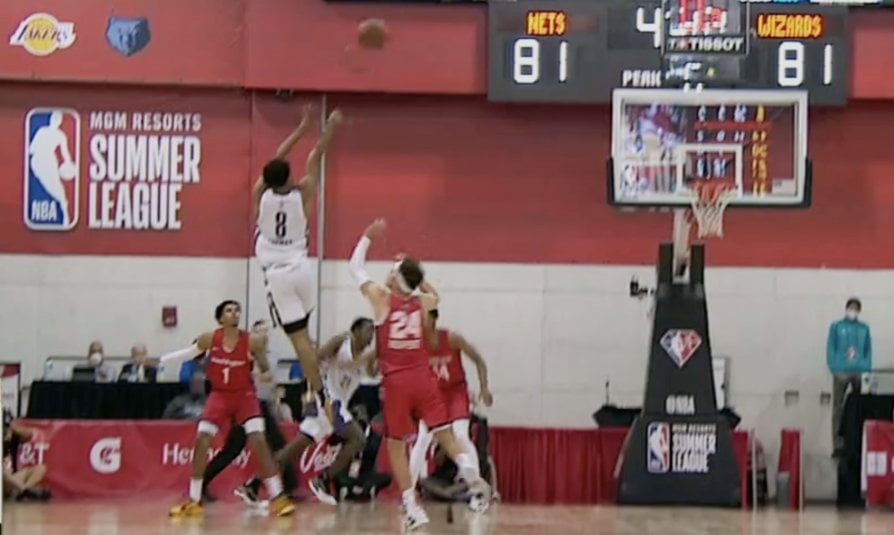
I’m very interested in the Hawk-Eye technology being implemented in the NBA, and wanted to share some thoughts.
Sony’s Hawk-Eye system is a series of cameras placed around the arena to help refs with calls. Originally created in 2000 for cricket, it now advertises being used in 23 of the top 25 global leagues. Since 2006 tennis has used it for its Challenge System, 2009 Cricket has used it for its Decision Review System, and since 2014 the Premier League uses it for its goal-line technology. The NBA has been experimenting with this recently. They have tested it in Summer League games as well as WNBA games. This year it is being used in NBA games.
Now, the technology can be used in a couple ways. Most easily, tracking a ball and predicting its path. This is used in tennis to judge in/out, or a soccer ball crossing a goal line. I’m the NBA, it sounds like they are using it only for goaltending calls right now. It can improve game flow to have this system, in real time, give an accurate call instead of waiting for a ref to watch the replay 10 times. It could be a great tool for patrolling out of bounds, 2pt vs 3pt, and who tipped a ball last. I believe there are more nuanced situations where this system can be trained to outperform refs, if the league wanted.
To track a ball in 3d space, you really only need 2 cameras. With a 3rd camera, you are really cooking. Maybe some cameras get blocked, add some more. The system was designed to use 6 or sometimes 7 cameras. For tennis they now use 10. In an early season pregame program, they said they have added 14 cameras on each arena for this system. “The 14 cameras tracked 18 body-pose locations (a player’s head, hands, hips, etc.) as well as ball location in three dimensions with extremely precise accuracy.” You do not need 14 cameras to determine the arch of a ball for goaltending calls. So what’s the deal?
“On the fan-engagement side, we feel that we’re still in the first inning with this [technology],” he says, “but we’re essentially turning basketball courts into motion-capture studios so there are truly endless possibilities for where you could take that motion-capture data. We can port it into immersive highlights, videogaming environments, metaverses, and all of those types of spaces to create different fan-engagement applications.” – Tom Ryan, associate VP, basketball strategy analytics, NBA
One issue here is using the tech to scan and track body movements for the leagues perpetual use and profit. See the actors guild strike about scanning actors to use as CGI without permission. The players association will figure this out I’m sure.
Hawk-Eye will help get more accurate calls, and speed up the game a little, but nothing major. AI will never replace human refs. There is too much subjective crap, like the new flopping call.
Put On Your Tinfoil Hats
I think the system could be trained to ref better than humans IF THE LEAGUE WANTED. With the body tracking they could make correct calls in all sorts of nuanced situations. But, what if your star player fouls out? Maybe the league doesn’t want the ref to call that foul. The league sends out memos of what to focus on in playoff series, absolutely putting their thumb on the scale. The league doesn’t want a 100% unbiased refs with 100% correct calls. Neither does Vegas. This era of sports betting is unprecedented, and it will be interesting to look back at in a couple decades.
The Hawk Eye system is cool and useful, but watch for the league to present it as adding increased accuracy and increased game flow, while not fully embracing its potential to accurately ref games, and instead make them money in a bunch of weird ways.
Quotes taken from this article: https://www.sportsvideo.org/2021/08/19/nba-looks-to-the-future-with-hawk-eye-tracking-tech-at-summer-league-wnba-commissioners-cup/
Other info from Hawk-Eye website and Wikipedia

1 comment
Here’s a video from Sony
https://m.youtube.com/watch?v=4pJBUAymAU8&pp=ygUYU29ueSBoYXdrLWV5ZSBiYXNrZXRiYWxs
Here’s the NFL using this for sports entertainment
https://m.youtube.com/watch?v=MHm5UN__btg&pp=ygUTbmZsIHRveSBzdG9yeSBnYW1lIA%3D%3D
There will be a lot more stuff like this Toy Story game than, not so much better reffing